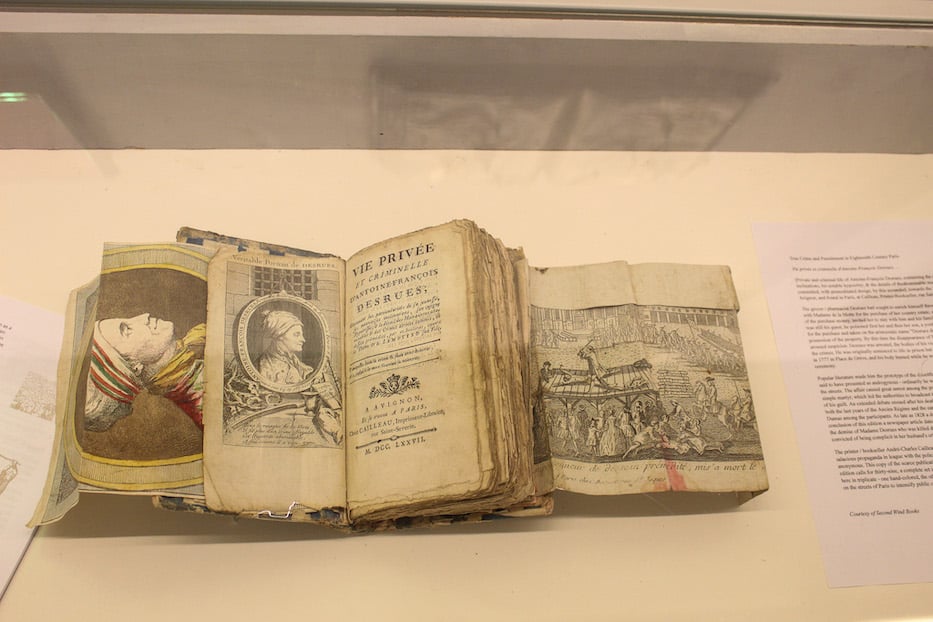
A page from Vie Privée et Criminelle d'Antoine-François Derues. Kapp Singer Photos.
A horse-drawn carriage ambles down a cobbled street. Three men are inside: a priest, a policeman, and a murderer. The murderer, wearing a dress and bonnet, whispers into the priest's ear. The policeman watches closely. Guards surround the carriage, carrying bayonets. A large, rowdy crowd is gathered in the background. Things are not looking up.
This scene is illustrated in the 1777 French police propaganda book Vie Privée et Criminelle d'Antoine-François Derues, currently on display at The Gallery Upstairs at the Institute Library on Chapel Street. The book, which details the crimes and brutal sentencing of poisoner Antoine-François Derues, is the oldest object the gallery has shown since opening around 2011. It is part of the new show Mysterious Circumstances—running October 19 to January 24—which brings together a wide array of spooky ephemera.
Curated by Martha Lewis and Maxim Schmidt, the show features centuries-old crime reports, iconic horror novels, and cryptic photographs, collages, and sculptures by contemporary New Haven and Connecticut-based artists.
“This is a critical moment for us as a gallery,” Lewis said. When she first began as a resident curator in 2016, the library didn’t have the infrastructure to exhibit rare and delicate objects. Over time, she and other staff worked to implement security and climate control measures— “the most boring things in the world”—and with the donation of several display cases, the gallery is now equipped to handle materials like the Desrues document, which is being loaned to the library from New Haven-based rare book dealer Second Wind Books.
“The fact that we’re even able to approach somebody and they’re willing to say ‘okay’ is significant,” said Lewis.
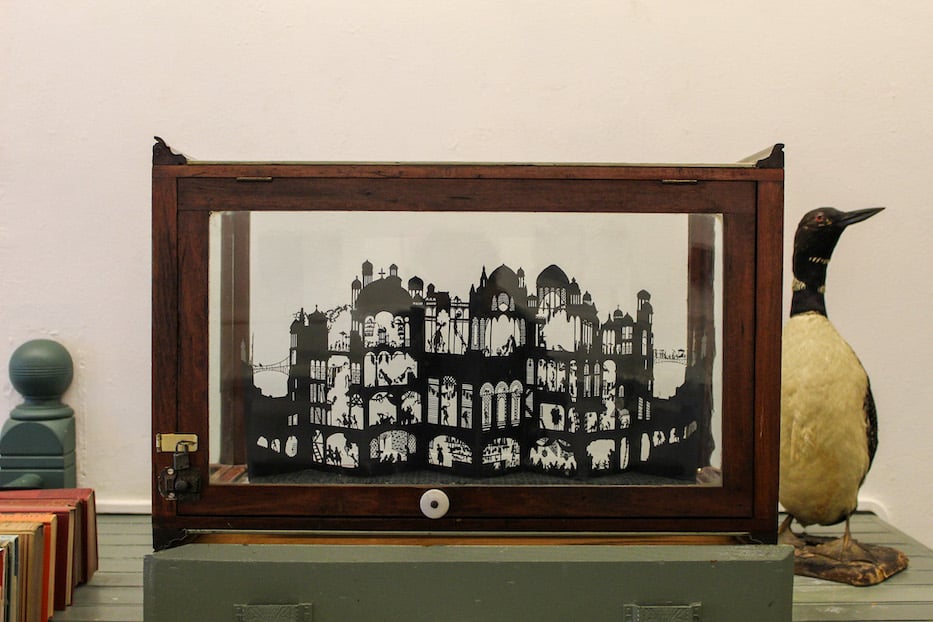
Joanna Robson's work.
The document itself is a thing to behold. In a glass display case sits Vie Privée et Criminelle d'Antoine-François Derues. Embellished with several dozen engravings, the book tells the story of how Derues, a poor Parisian shopkeeper, murdered the aristocrat Madame de le Motte and her son in a carefully planned heist to take possession of their Bourgogne estate.
Derues was swiftly caught and sentenced to death, and large crowds showed up to his execution to watch in awe and disgust as he was tortured, beaten, and burned at the stake. In these violent, volatile years leading up to the French Revolution, Desrues’s crime made him a sort of legend in France. His creative tactics to dupe the gentry of the Ancien Régime—he was known for cross-dressing to disguise himself—seemed to strike a chord with an increasingly agitated public.
Worried that Desrues’s impropriety could become contagious, the police launched a large propaganda campaign to combat rising resentment of the ruling class. France’s Lieutenant of Police contracted various printers to produce and distribute texts like Vie Privée et Criminelle d'Antoine-François Derues, detailing his crime. These materials lambasted and villainized Desrues, drawing special attention to the police’s claim that he was born intersex in order to figure him as a pariah.
In the copy of the book on view at the Institute Library—a particularly rare edition given its near-complete set of illustrations—Desrues can often be seen wearing a large, puffy dress and holding a folding fan.
“It has a lot of interesting gender aspects,” Schmidt said. “We were floored when it was brought in because we had never heard of a case like this.”
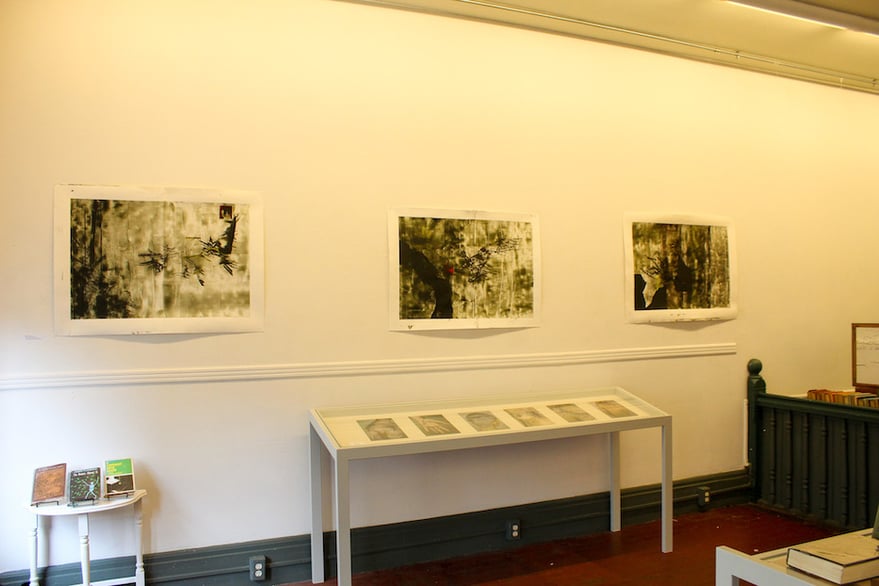
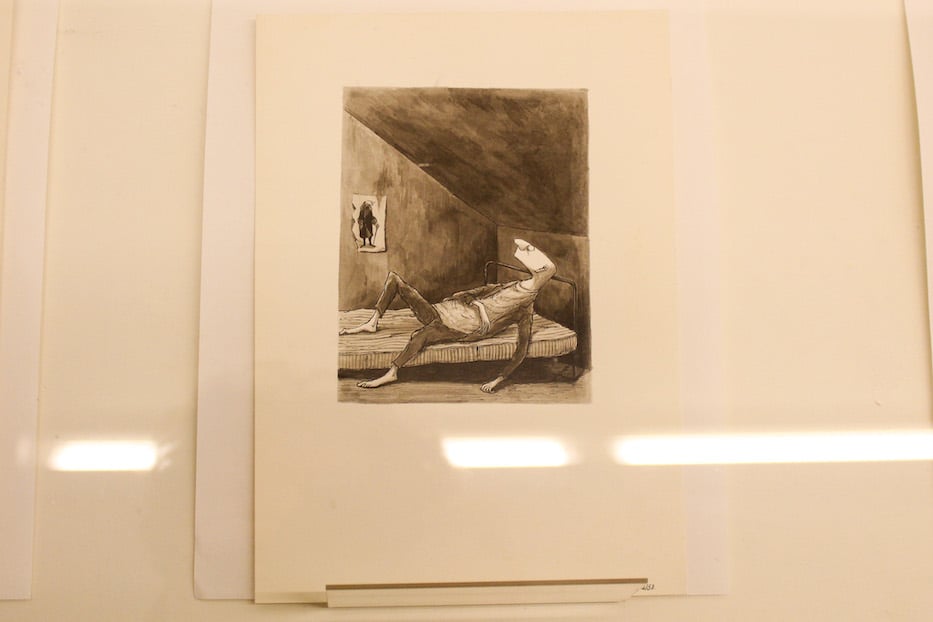
Top: Geoffrey Detrani's work. Bottom: Detail, Edward Gorey's work. Loaned to the Institute Library by the Edward Gorey Charitable Trust.
Mysterious Circumstances also includes three never-before-exhibited watercolors by Edward Gorey, the writer and illustrator who so iconically and satirically captured the dark and grim aspects of life. Loaned to the gallery by the Edward Gorey Charitable Trust, the watercolor series, entitled Ô rage, Ô désespoir! depicts Mr. Earbrass, Gorey’s cartoon alter ego.
With a flat, angular head, a thick beard, and a long fur coat, Mr. Earbrass haunts and charms. The scenes are comic and devious. In one, Mr. Earbass sits at a table sipping a small glass of wine with two other men, one wearing a trench coat and the other in a black turtleneck reaching nearly to his chin. In another, he grasps the arm of a man sitting on the edge of a stone wall in a city, a bright full moon shining in the black sky.
“He was my first favorite artist, so it’s been a really weird full-circle moment for me to be showing work of his that has never been shown before,” Schmidt said. “This is a life-changing moment.”
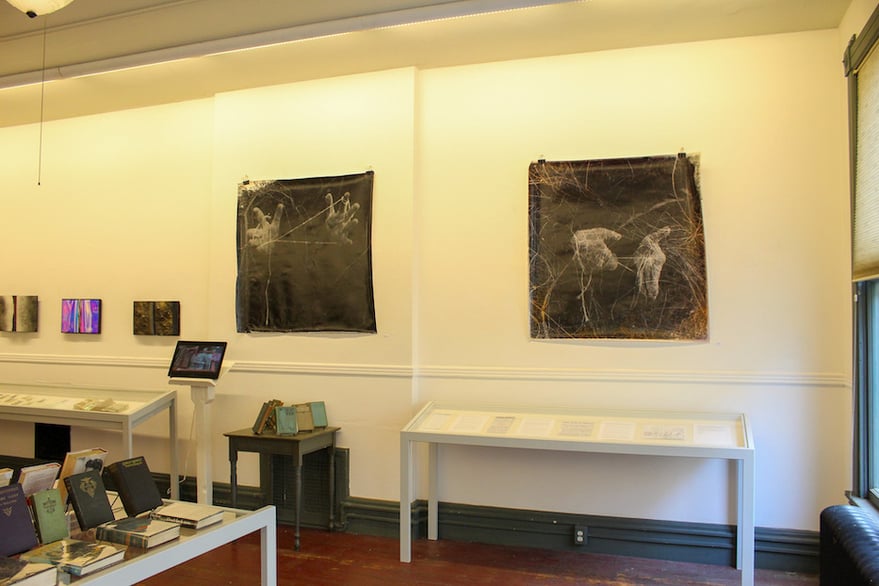
Joan Fitzsimmons' work on view in Mysterious Circumstances.
The playful mystery of Gorey’s watercolors is accentuated by a chilling series of three large silver gelatin prints by the Norwalk-based photographer Joan Fitzsimmons. The double-exposure images, black and shiny, depict a pair of disembodied hands among a thicket of brambles. Held to the wall with binder clips—neither matted nor framed—the edges of the photographs curl outwards. The encounter feels raw.
This experience of materiality stretches across the exhibit, from Geoffrey Detrani’s abstract mixed-media prints to Joanna Robson’s extraordinarily detailed papercut scene of a palace overrun with monkeys. The artists’ handiwork is as legible as their conceptual work. This is particularly clear in Rex Morris’s tattoos—displayed in five photographs beneath Detrani’s work—which feature intricate, scraggly lines which fracture into angular, jagged patches of black ink.
“There was something about an artist using permanent ink on the body to create these kinds of extra holes, cavities, scars, welts—ruptures within the body—that seemed significant,” Lewis said.
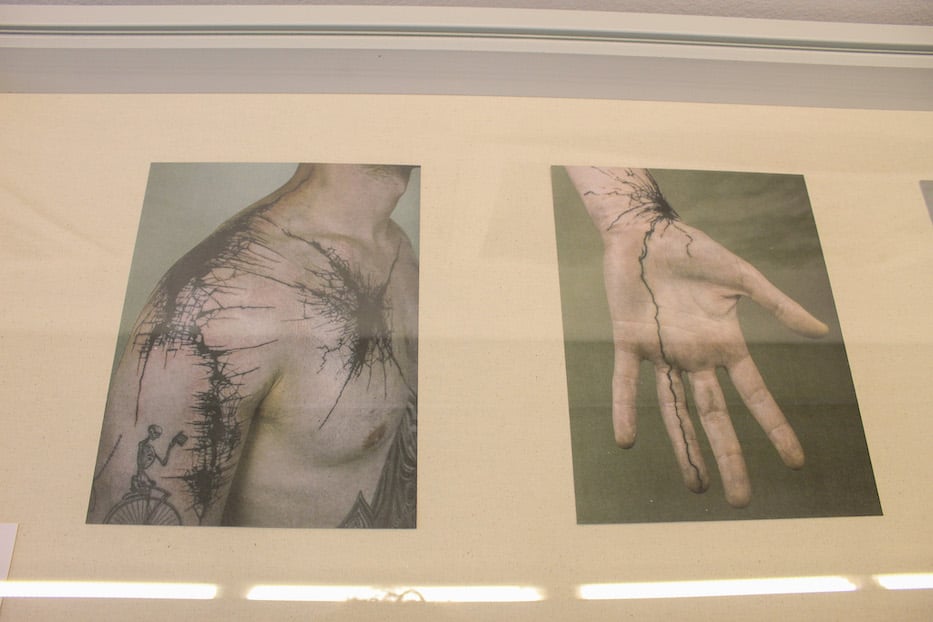
In their tattoos, Morris, who goes by FCKNRX, adheres to a strict symbolic language. Each tattoo is done according to visual guidelines in one of their several “systems of abstraction.” The “CAVITY” system, for example, denotes “angular textural formations creating depth into the skin, with large black focal points,” while “GROWTH” calls for “branching and woven lines of similar weight informed by fungal mycelium.”
“It’s conceptual in a way that’s different than a lot of other tattoo artists,” Schmidt said.
Also included in the show is a gallery of old photographs by members of the Institute Library community. Once-quotidian snapshots—family portraits, polaroids from vacations, pictures of kids in their Halloween costumes—take on an eerie air in Mysterious Circumstances.
“I’ve always really loved collecting old snapshots because they’re moments of someone else’s life that were discarded or lost in some way, and it feels sacred to pick them up again and give them some kind of protection or safety,” Schmidt said. “The pictures themselves are worth looking at, but also the variety of photographic techniques and the materiality of them are really interesting.”
In one old tintype, a woman with a bulbous haircut stares straight at the camera, eyes completely blank. In another picture, an old man and a horse pose together. A third has a chunk ripped out—some never-to-be-known undesirable character carefully extricated from history.
“Mysteries and weirdness are all around us, and frankly, we’re all a little weird,” Lewis said with a laugh.
Mysterious Circumstances runs through January 24, 2024 at the Institute Library, 847 Chapel St. in New Haven. For hours and more information, visit the Institute Library's website.